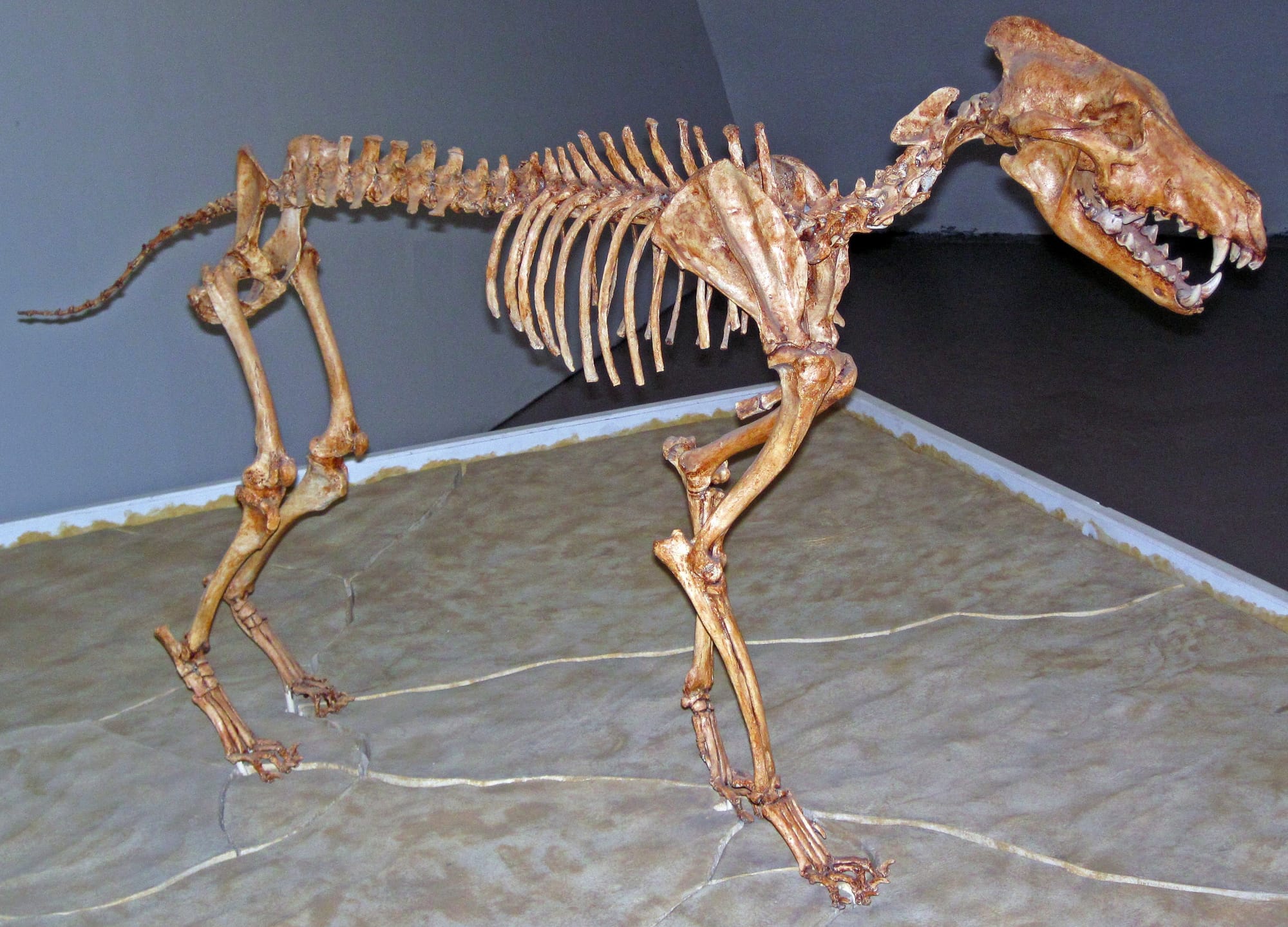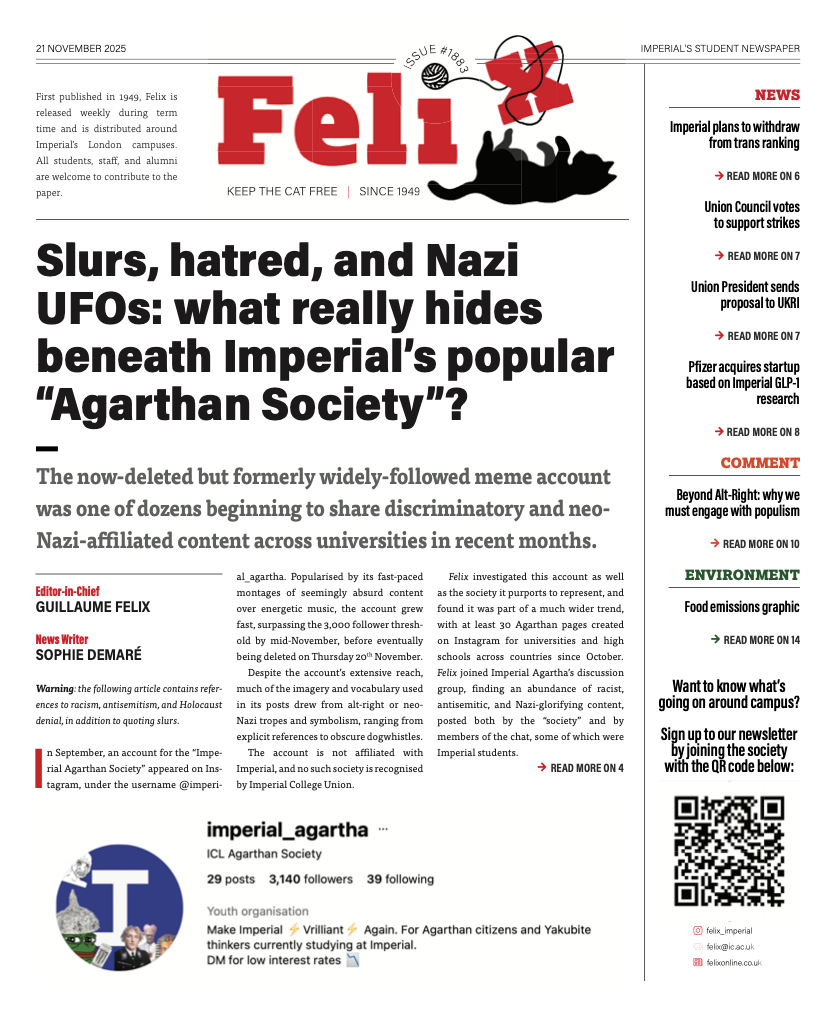A tale of dire wolves and ferrets
On the ethics of cloning for conservation.

Considered to be the rarest mammal in North America, the black-footed ferret has narrowly escaped extinction twice.
Before white settlers arrived from Europe, prairie habitat in the American Midwest totalled around 1 billion acres. But as well as displacing indigenous communities, the settlers dismantled local ecosystems, ploughing the soil and replacing native species with livestock. Nowadays, just 1% of that tallgrass prairie remains across Illinois, Iowa and Minnesota.
Ranchers considered black-footed ferrets and their main source of food, prairie dogs, pests due to their tunnelling activities, and exterminated them through poisoning. By the 1900s, settlers had introduced the sylvatic plague, Yersinia pestis, which later became rampant, catastrophising prairie dog populations and causing black-footed ferret die-offs too. In the 1950s, black-footed ferrets were thought to be extinct.
Somewhat miraculously, a handful of remaining ferrets were found in South Dakota, and they were brought into captivity. They took poorly to scientists’ attempts at breeding them and in 1979, the black-footed ferret was declared extinct, again. However, in 1981, a fantastic discovery was made when a sheep dog brought a dead black-footed ferret to its owner in Meeteetse, Wyoming. After the Wildlife Authorities were called in, they discovered a small population of the ferrets in nearby forests.
The population eventually grew to over 100 individuals and hopes were high until outbreaks of canine distemper and sylvatic plague devastated the population, leaving just 8 individuals remaining in the world. The black-footed ferret’s future seemed bleak once more.
Scientists bred 7 of the remaining ferrets and cryogenically preserved the tissue of one particular female, Willa, who refused to breed. Whilst hordes of offspring were produced from the other ferrets, the gene pool of these descendants was severely limited by the small number of founding ferrets. Scientists knew that Willa’s DNA had 10 times the number of unique alleles as that of the existing population, so Revive and Restore, a private company aimed at restoring biodiversity using biotechnology, and ViaGen, a pet cloning company, teamed up and set out to clone Willa to introduce new genes and ‘rescue’ the existing population’s genetic diversity.
In 2020, they succeeded, producing Elizabeth Ann, and then Noreen and Antonia. In 2024, Antonia gave birth to kits, marking the first time a cloned endangered species in the US has produced offspring.
The black-footed ferret is not the only animal which has been subject to this type of conservation cloning. Przewalski’s horse, which nearly went extinct in the mid 20th century, has seen remarkable success thanks to 300 cell lines which were frozen and resurrected in a similar fashion.
Scientists haven’t stopped there. In 2025, Colossal Biosciences became the first firm to achieve genetic de-extinction: an entirely extinct animal brought back to life. Dire wolves roamed the Americas over 10,000 years ago and nowadays are probably most famous for their appearance in the popular TV show Game of Thrones. Colossal’s scientists extracted DNA from their fossils, pinpointed key genes determining their physiology and behaviour and then edited modern grey wolf DNA to more closely resemble dire wolf DNA by replacing these genes. They then inserted this DNA into modern wolf embryos using cloning technology. 3 dire wolf pups were born: Romulus, Remus and Khaleesi.
Colossal Biosciences celebrates this as a success, and plans to emulate this with other animals, notably, the woolly mammoth. The corporation recently acquired ViaGen, the cloning company responsible for cloning the black-footed ferret, and has additionally attracted funding from names like Paris Hilton, Peter Jackson, and George R.R Martin himself.
Whilst the use of biotechnological approaches for the black-footed ferret could be more readily described as “cloning for conservation,” the waters surrounding Colossal Biosciences are murkier. Billionaire founder Ben Lamm, who made his money through a series of tech ventures, claims conservation as his goal, but perhaps his wealth could be better invested in preventing the extinction of the wildlife we still have.
Whilst the International Union for the Conservation of Nature (IUCN) has approved biotechnology for limited use in restoring genetic diversity to small populations such as the black-footed ferret, they issued a firm statement in response to Colossal Biosciences, arguing that excessive focus on gene editing “risks diverting attention from the more urgent needs of ensuring functioning and healthy ecosystems.” Ronald Sandler of Northeastern University’s Ethics Institute additionally concedes that cloning the black-footed ferret was necessary as a “last-ditch, emergency effort,” but warns against biotechnology replacing other conservation methods. The disappearance of the black-footed ferret was caused by the takeover and destruction of Native American land, not a technological problem, so even if the ferrets continue to be cloned, the effort is rendered meaningless without the proper protection of their native prairies.
In a world where ⅛ of present species are threatened with extinction and insufficient action is being taken to prevent catastrophic biodiversity losses, speculation about bringing back dire wolves and woolly mammoths feels tasteless at best. The IUCN refuses to recognise Colossal Biosciences dire wolves’ as a distinct species and even warns that unanticipated interbreeding with the endangered North American grey wolf could put the latter population at risk, meaning that, at worst, Colossal Biosciences could actually be doing tangible harm to canid conservation.
Even more concerning is that scientists who have spoken out against Colossal Biosciences have been hit with smear campaigns seeking to diminish their scientific credibility. Colossal Biosciences denies responsibility for the online attacks, stating it aims to “inspire scientists” rather than tear them down. Regardless of who orchestrated the smear pieces, all of this represents the toxic underbelly of conservation – money talks, and loudly.









